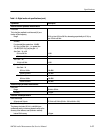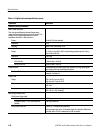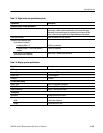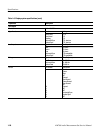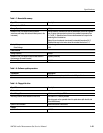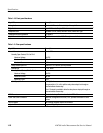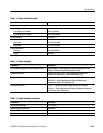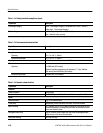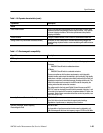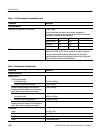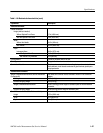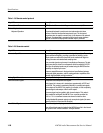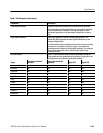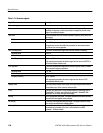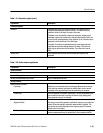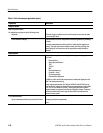
Specifications
AM700 Audio Measurement Set Service Manual
1–25
Table 1–16: Dynamic characteristics (cont.)
Capabilities Description
Shock
Loose Load Vibration 1 inch p-p sinusoidal at approximately 4.5 Hz with at least 1/16 inch peak
separation between the packaged product and the surface. Thirty minutes
in normal shipping orientation, 30 minutes split between other possible
shipping orientations.
Vehicle Vibration 1.33 g
RMS
, random vibration, from 5 to 500 Hz, 60 minutes on each axis.
Storage Shelf-Life (uncontrolled warehouse climate) Six months or more if desiccant is included inside normal package, and
normal package is placed inside a vacuum sealed bag with additional outer
package.
Table 1–17: Electromagnetic compatibility
Capabilities Description
EMC requirements
Emissions Emissions shall be within the limits specified by the following requirements.
Enclosure
EN55022 Class B limits for radiated emissions
AC Mains
EN55022 Class B limits for conducted emissions
To ensure compliance with the above requirements, only high-quality
shielded interface cable should be attached to this instrument. High-quality
cables have a reliable, continuous outer shield (braid and foil) that has low
impedance connections to shielded connector housings at both ends. The
shield of the cable used to connect to the DSP must be clamped by the
housing where the cable enters the connector.
The cables used for the front panel Digital Out and the rear panel AES
REF OUT must be wired with the cable shield connected to both pin 1 and
to the shell of the female XLR connector (sometimes labeled “G” within the
connector). Both of these connections should be as short as possible, less
than 0.25 inch (0.1 cm).
Immunity, Enclosure, Electrostatic Discharge IEC 801-2 1984
Up to 8 kV with no loss of stored data, change to control settings,
degradation of performance, or temporary loss of function.
Immunity, Enclosure, Radio Frequency
Electromagnetic Field
IEC 801-3 1984
No degradation of performance when the instrument is subjected to a 3
V/M electromagnetic field over the frequency range of 27 MHz to 500 MHz.



